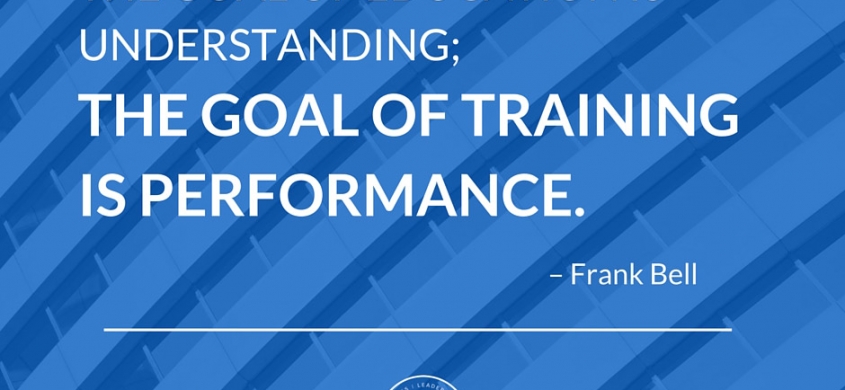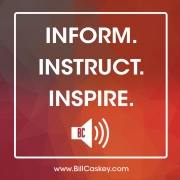A Proven One Day Training Plan
Well, it’s that time of year when we plan sales meetings and retreats. I’ve gotten a lot of calls recently from companies who want me to come in and speak to their groups but, unfortunately, my time is booked through February. I don’t remember getting a call from you. Hmmm. Oh well, maybe I did and just don’t recall.
Consequently, I wanted to give you CEO’s and Sales Leaders some ideas on how you can run an uber-effective sales training meeting to kick off 2016.
Here are the steps I take both for preparation and for execution of an event.
Step 1: Get Really Clear on Your Objectives.
I find most leaders are a little fuzzy when it comes to specific objectives for a one-day training meeting. I suggest you write out 8 to 10 things you’d like to see as a result of this meeting and then build curriculum to achieve that. Don’t try to load it up too full. Leave breathing space so that people can absorb the content.
(That’s a major fault of sales leaders and CEOs. They think that since they have everyone in the room, they need to chock it full of content. Less is more. More becomes drivel.)
Step 2: Survey Your People.
The idea here is that you want to know what they struggle with, what they are interested in learning how to do, what skills they feel like they are lacking in. If not just in this year, then in the next three years. The idea with this is that if the sales person can be an architect of their own training, they will be far more motivated and inspired to take the ideas and execute them in the field when it’s time.
 Step 3: The Event.
Step 3: The Event.
Here is what I consider a great way to execute a sales training event:
A. Spend the first hour just getting to know each other again.
I know that may sound crazy, but the first hour should not be a head-first dive into content.
You should talk about the last year, maybe things that they are interested in, what their current state of mind is, positives or negatives. The idea here is to just ease into this. You want to create an in-room relationship with your people, where you can learn what their state of mind is prior to engaging in change work.
B. Review the agenda.
As you are reviewing the agenda, teach something. The first two hours of any of my full-day training’s are getting to know what they want to accomplish in that meeting. It’s not just a white board session. I’m actually training as we go through and making notes for myself on what they need coaching on.
C. Spend an hour on the mental framework of success at your company.
In other words, talent needs to know how to think in order to achieve massive success in the field for 2016. This is not what they need to do, that comes later. This is how they need to think. It’s a great way to have discussion around the mental side of achievement, what we would call the inner-game. You could even do what we do which is create a Mindset Scorecard that helps them know how to rank themselves.
D. In this part of the meeting, usually one to two hours, you will be taking elements from the Upfront Assessment and discussing them as a group, role-playing where needed.
Usually, in a group of 10 to 50 people, there will be different people who are highly skilled at different parts of the sales process. If one of your people is really good at getting new meetings, then when the topic of “how to get more new meetings” comes up, they need to be front and center. Not in teaching it necessarily – but in driving the discussion.
E. Review of competencies.
I haven’t run across a sales team in 25 years that doesn’t have a need for better or different competencies moving forward. One example is a recent client who wanted to do video-shoots with their sales people so that when prospects look them up online, there will be a picture of the sales person, a bio, and a short video.
Shooting video requires a very different skill set than appearing live in front of prospects. They needed to identify those skills and bring somebody in to work on them. You might not think that video shooting skills are relevant for your team, and they may not be, but they were for them and they identified that and executed it flawlessly.
F. Check in with your team to see what each person is learning.
Unless you have the constituent tell you verbally, what they’re learning, it will all be a mystery, even to them. Something happens inside the mind when you must stand up and make a proclamation.
My suggestion is that every two hours, you stop the meeting and say, “OK, what has anybody learned so far that they’re going to take action on?” That is the question. No other questions suffices. That is it.
[shareable cite=”Bill Caskey”]The number one law of learning is repetition. [/shareable]
Step 4: Audio review.
I suggest you grab a $25 microphone from Amazon and plug it into your computer and do a 10-12 minute review of the notes, the training tips and strategies that came out of the meeting. Send it to each person about 7 to 10 days after the event.
Why? Because this helps them recall and remember some of the key moments. The number one law of learning is repetition. If you are able to recap the day, send it to them in an audio file, they will be able to relive and remember.
I hope this helps. If you are interested in having me come in and work with your team from March on, I’m happy to do it. Click here to schedule a call. But I wanted to give you this if you were going to attempt to do it yourself earlier than that.
Good luck. Let me know how it goes!



